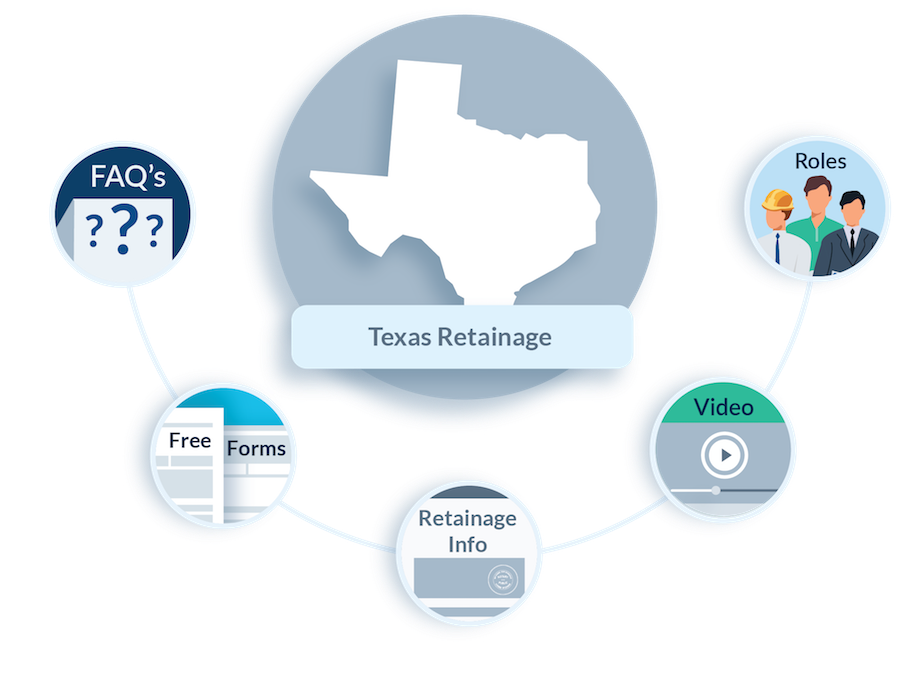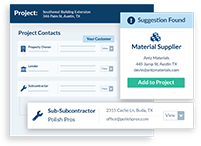Texas Retainage Requirements
- Private Jobs
- Public Jobs
- Top Links
10% Retainage Limit
For work in which a mechanic’s lien may be claimed, the property owner must retain 10%.
30 Day Pay Period
The time period to withhold retainage is very complicated and not well defined in Texas law. It appears that 30 days after work is completed retainage must be released.
There is a Process to Recover
Yes, specific notices and timing requirements apply to the recovery of retainage in Texas.
Not Held In Escrow
In Texas, contractors and owners do not need to hold retainage funds in a separate escrow account.
5% or 10% Retainage Limit
On projects valued at less than $5M, no more than 10% may be withheld as retainage. On projects valued at $5M or more, no more than 5% of retainage may be withheld.
Pay Period
The statute is unclear, but retainage may not be withheld after the project reaches substantial completion.
There is a Process to Recover
Yes, specific notices and timing requirements apply to the recovery of retainage in texas.
Retainage, also called “retention,” is an amount of money “held back” from a contractor or subcontractor during the course of a construction project. In general, retainage serves two main purposes:
- To provide an incentive to the contractor or subcontractor to complete the project; &
- To give the owner some protection against problems like liens, contractual defaults, delays, and more.
In most states, laws exist to regulate how the parties use the retainage concept, mostly protecting some parties against abuse of the tool from others. The following are resources, legal information, and answers to frequently asked questions about Texas’ retainage requirements.
Texas’ retainage limits and deadlines
For private projects, the amount of retainage that may be withheld is no more than 10% of the total contract price, or reasonable value of the labor and/or materials if there is no contract price.
In order to make a claim for a lien on retainage, the claimant must send a Notice of Contractual Retainage no later than 30 days after the claimant’s contract is completed, terminated, or abandoned, or 30 days after the original contract is terminated or abandoned; whichever is earlier.
The deadline to file a claim on retainage can be tricky. Generally, the lien must be filed no later than 30 days after project completion, or after the original contract is terminated or abandoned; whichever is earlier. However, the claim must also be filed no later than the earliest of:
(i) the 15th day of the 4th month after the claimant’s last furnishing of labor or materials (3rd month if the project was residential – yes, retainage requirements apply to residential projects, too)
(ii) the 40th day after the completion date stated in an affidavit of completion provided the owner sent the claimant notice of an affidavit of completion in the time and manner required;
(iii) the 40th day after the date of termination or abandonment of the original contract, if the owner sent the claimant a notice of such termination or abandonment in the time and manner required; or
(iv) the 30th day after the date the owner provided the claimant with a written demand (meeting the statutory requirements) for the claimant to file the affidavit claiming a lien.
Note: changes will go into effect for all original contracts entered into on or after 1/1/22, the details of these changes can be found in the FAQs section below.
For public projects, the amount of retainage that may be withheld depends on the overall project value. For contracts valued at less than $5M, no more than 10% may be withheld as retainage. On projects valued at $5M or more, the amount of allowable retainage is only 5% of the total contract price.
To make a claim for retainage on public projects, the claimant must send a Notice of Contractual Retainage no later than 90 days after the completion of the project. As for the deadline to enforce the claim, claimants should follow the payment bond enforcement deadline, which it more than 60 days after sending the notice, but no later than one year after the notice was served.




